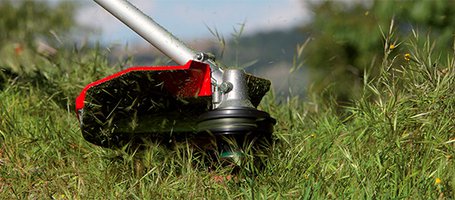Spring has arrived and now is the time to prepare the ground for new crops. Of course, this not always an easy task: soil preparation is a painstaking operation that requires time, technique and foresight. Not just because of the numerous procedures involved, but also because, at this time of year, weather conditions are unpredictable, often with extreme temperature changes.
Let's look at how we can achieve a plentiful crop of flowers and fruit in just a few simple steps.
1. Fertilising the seed bed
To obtain a plentiful crop, you must start by preparing a good seed bed where your plants can grow strong and healthy. The best solution is to use a natural fertiliser - ideally horse manure, generally considered to be the best available.
2. Turn over and aerate the soil
The second step requires the use of a scarifier to aerate the ground and remove mulch, leaves and other organic residue, thereby allowing water, air and the nutrients in the fertiliser to penetrate the soil and reach the roots.
Once the ground has been cleared of weeds, you can apply soil conditioners to improve it. If necessary, turn the soil over using a spade or, better still, a rotary tiller, such as the MZ 2075 RK, ideal for breaking up compacted earth to create a fine tilth ready for seedlings.
3. Consult the sowing calendar
Once the ground has been prepared for sowing, all that remains is to decide what to plant. To do this, consult a sowing calendar: this guide can help you determine the climatic conditions and the morphology of your land, and suggest the best crops to sow in your area at different times of year.
4. Make it easy with a power barrow
Like all jobs involving the soil, sowing requires physical effort and the continuous movement of material from one place to another. To make the job easier, you can use a compact transporter, such as the TN 3400 K, that allows you to transport soil, fertiliser and all the materials you need for sowing, saving time and effort
What to sow and when to sow it
From March onwards, you can start sowing some crops, such as basil, cabbages, fennel, carrots, peppers and aromatic herbs. Of course, before you start, you need to make sure the climatic conditions are suitable: winters have got longer over the last few years. If warm weather doesn't arrive, don't run the risk - wait. You can always add plants to your plot as the months advance and summer begins.
If you haven't got a lot of space available, we recommend growing beans.
Whether early or late cropping, dwarf or climbing, beans are usually sown any time between March and June. Their cultivation cycle varies between 60 and 90 days depending of the variety and even just a few plants can yield an abundant crop.
Do you feel ready to take on a more demanding crop? Then why not try growing tomatoes, which, unlike beans, have very precise requirements as regards nutrition, temperature and sunshine. For the plants to mature correctly, it is important that the temperature does not exceed 20° during the day or fall below 12° at night. The best period to start is therefore around the end April and beginning of May.
Growing onions also requires a good deal of work and perfect soil preparation. If you want to obtain a satisfactory crop in winter as well as summer, do not forget to hoe the ground regularly to keep it free of weeds and roots.
With the arrival of autumn, it becomes more difficult to decide what to plant in your vegetable plot, as there are not many plants that can resist the cold. Vegetables grown between October and December include chicory, broad beans, lettuce, parsley, radishes, rocket, spinach and valerian.
Whatever the season, make sure that your plot has at least 7 hours sunshine per day, that the ground is always well-watered and that each plant has enough space to grow healthily. Finally choose organic fertilisers and avoid chemical weedkillers, which can have a harmful effect on the microorganisms naturally present in the soil that promote take up of nutrients and help combat disease.





